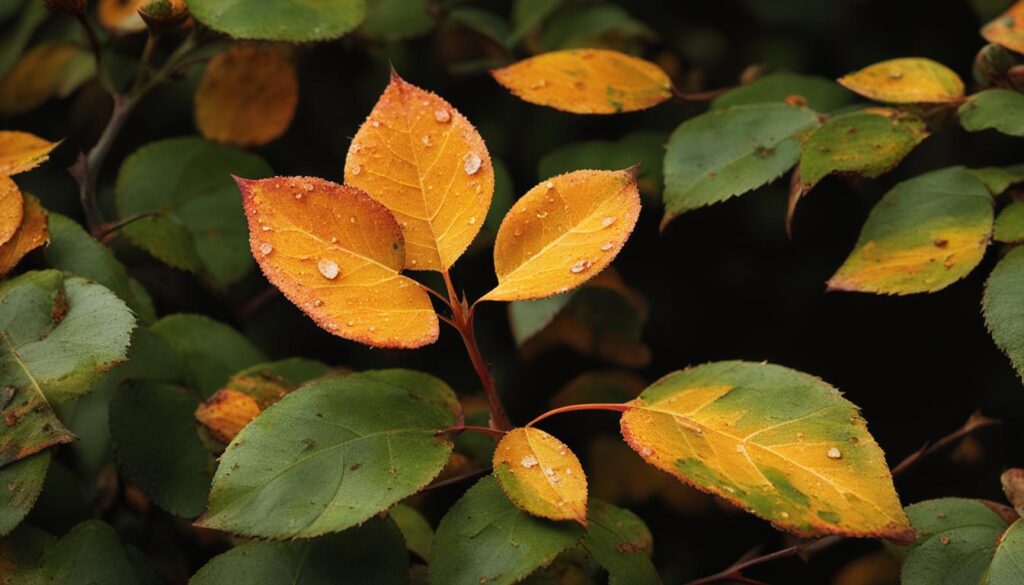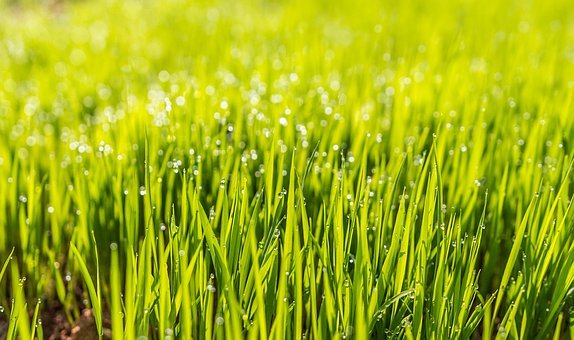Are you struggling with unsightly yellow spots on your rose leaves? Don’t worry, you’re not alone. Many gardeners face this common issue, but the good news is that there are effective strategies to combat yellow spots and restore the health and vibrancy of your roses. In this article, we will discuss the causes of yellow spots on rose leaves and provide you with valuable treatment strategies.
Yellow spots on rose leaves are often caused by fungal diseases, such as rose rust. This fungal infection thrives in prolonged periods of leaf wetness and can seriously damage your roses if left untreated. However, most infections are light and do not require immediate control.
Understanding rose rust and its symptoms is crucial for effective treatment. This common fungal disease affects various rose varieties and is characterized by yellowing leaves, distortion of young stems, and the production of bright orange pustules on the undersides of leaves. Corresponding yellow spots can also be seen on the upper leaf surfaces.
To prevent and treat rose rust effectively, it is important to take proactive measures. Here are some tips to help you combat yellow spots on rose leaves:
- Ensure your roses have good air circulation by pruning them appropriately.
- Regularly inspect your roses for any signs of yellow spots or orange pustules.
- Implement proper sanitation practices by removing and destroying infected leaves.
- Consider using fungicide treatments, following the manufacturer’s instructions carefully.
- Choose rose varieties that are resistant to rust to minimize the risk of infection.
By following these strategies, you can prevent the occurrence of yellow spots on your rose leaves and keep your roses healthy and vibrant. Remember, early intervention is key to successful treatment, so don’t delay in taking action against rose rust.
Now that you have a better understanding of rose rust and effective treatment strategies, you can take control of this common issue and enjoy the beauty of your roses without the worry of yellow spots. Stay proactive, stay vigilant, and watch your roses flourish!
Understanding Rose Rust and its Symptoms
Rose rust, caused by several species of fungi in the genus Phragmidium, is a common fungal disease that can affect various rose varieties. This disease can be introduced into your garden through infected shrubs. Rose rust first appears on the lower leaves and gradually spreads to the entire plant.
The symptoms of rose rust are easily identifiable. You’ll notice yellowing of the leaves, distortion of young stems, and the development of bright orange pustules on the undersides of the infected leaves. These pustules are filled with spores of the rust fungi. Corresponding to these pustules, yellow spots can be seen on the upper leaf surfaces. It’s important to pay attention to these symptoms to diagnose and treat rose rust early.
Rose rust typically develops during the spring and fall seasons; however, it can also affect roses during the summer months. The combination of yellow spots, orange pustules, and leaf yellowing serves as a clear indication of rose rust infection.
This image showcases the orange pustules commonly associated with rose rust, attracting unwanted attention and compromising the visual appeal of your roses. Taking appropriate measures to prevent and treat rose rust is essential to maintain the health and beauty of your rose plants.
Tips for Preventing and Treating Rose Rust
To prevent rose rust and keep your roses healthy and vibrant, it’s important to follow proper sanitation practices. Start by removing any infected leaves or stems as soon as you notice them. This will help eliminate the source of the fungus and prevent further spread. Additionally, make sure to clean up fallen leaves and debris around your rose bushes regularly to reduce the chances of reinfection.
Another effective method for preventing rose rust is to choose resistant rose varieties. Look for rose cultivars that are specifically bred to be resistant to fungal diseases like rust. These resistant varieties have a higher chance of staying disease-free, even in unfavorable conditions. Consult with your local nursery or horticulturist for recommendations on resistant rose varieties that thrive in your area.
If rose rust does appear on your plants, early intervention is crucial. Fungicide treatments can be used to control the spread of the disease. Apply a suitable fungicide according to the manufacturer’s instructions. Be sure to cover both the upper and lower surfaces of the leaves to ensure thorough coverage. Repeat the fungicide application as directed to effectively combat rose rust.
Remember, prevention is key when it comes to rose rust. By practicing good sanitation, choosing resistant rose varieties, and promptly treating any signs of infection, you can keep your roses healthy and free from this damaging fungal disease.
Is the Method to Combat Yellow Spots on Rose Leaves Effective for Red Geranium Leaves?
The method to combat yellow spots on rose leaves may not be effective for red geranium leaves. The reasons for red geranium leaves can be different from those causing yellow spots on rose leaves. It’s important to understand the specific causes and treatments for red geranium leaves to address the issue effectively.










